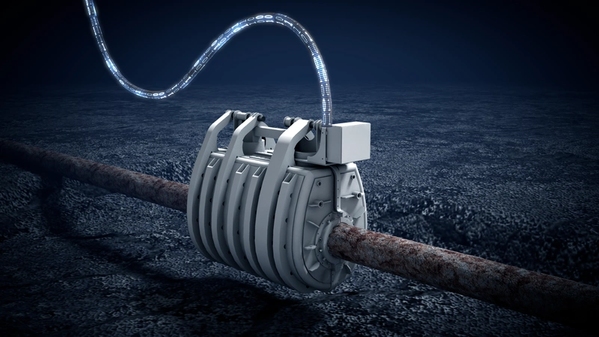
Norwegian robotics company Kongsberg Ferrotech has joined forces with Equinor, SINTEF, and Gassco to develop 3D printing technologies for subsea equipment repair and maintenance.
The company has already developed a subsea robotic system, Nautilus, that can be used to carry out remotely operated composite repairs on subsea pipelines.
Now the Kongsberg Ferrotech wants to add additive printing capability to these systems, using metallic media to repair defects, with support from the Research Council of Norway through the PETROMAKS 2 program. The company will use 3D printing to rebuild damaged metal structures - layer by layer – allowing permanent repairs and implementing new functionality as needed.
“The rapid development of 3D printing technology is creating new opportunities and markets going forward,” says Brede Lærum, head of 3D printing at Equinor. “Combining this technology with Kongsberg Ferrotech’s robots opens many exciting new possibilities for subsea repairs and modifications. We are looking forward to a close collaboration with our industry partners.”
“This is the start of a new industrial adventure that is of strategic importance to our company. We see a large long-term market opportunity also beyond the oil and gas industry,” says Christopher Carlsen, CEO at Kongsberg Ferrotech.
Kongsberg Ferrotech's technology is based on versatile underwater robots that offer a complete toolbox for inspection and repair of equipment and their components in subsea environments. The inspection, maintenance, and repair (IMR) robots are exceptional in the way they perform repairs and modifications in a dry environment while completely submerged, the firm says.
Deepwater testing on the composite repair has been completed in the Trondheim Fjord in Norway and the technology is ready to be deployed on commercial applications and operations in the Southeast Asian market in Q3 2021, the company says.
Development of the 3D printing capability will run concurrently with an expectation a first application will be possible in 2022.
“The collaboration with Equinor, Gassco, and SINTEF represents world-class expertise within operations of underwater installations, underwater transport systems, and research on metallic repair processes. This unique opportunity to develop underwater 3D printing for lifetime extension is an important technology leap - not only for Kongsberg Ferrotech but also for the industry,” says Carlsen. “We plan to offer service and maintenance based on 3D printing as early as 2022.”
The worldwide market for underwater repair is large, the Norwegian shelf alone has over 10,000 kilometers of subsea pipelines, the company points out. The current solutions for underwater pipe repairs and lifetime extension are often time-consuming, expensive, and in many cases requiring production shut down.
“With our IMR-robotic technology, we bring the workshop to the damage - not the damage to the workshop,” says Carlsen. “Our solutions have been in development for the past five years and we will begin offering underwater composite repairs to the Southeast Asian market in Q3 2021. The world’s most advanced subsea robots give the customer major savings in both cost and time - performed in an environmentally friendly manner - without producing discharges to the sea.”



